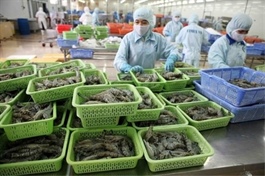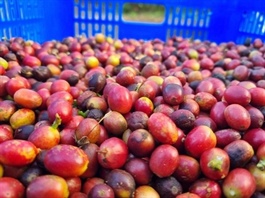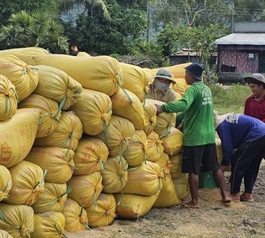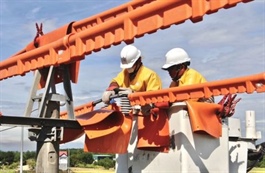Cement industry expected to bounce back in 2024
Cement industry expected to bounce back in 2024
The domestic cement industry expects to bounce back in 2024 thanks to the Government's tireless efforts to speed up public investment and implementation of key transport infrastructure projects, along with approving many industrial and urban infrastructure ones.
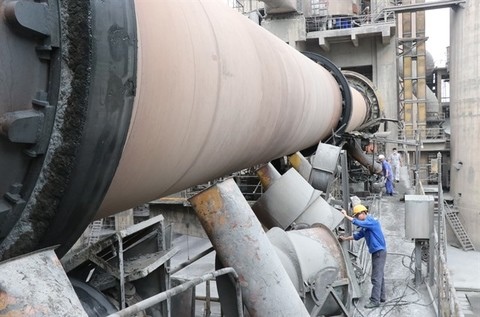
A factory of VVMI La Hiên Cement Co in the northern Thái Nguyên Province. — VNA/VNS Photo Hoàng Nguyên |
At the same time, cement producers are also trying to expand their markets, shifting to several outlets such as the US, Australia, North America, South America and Africa, to reduce dependence on China and take full advantage of the industry which can provide up to 120 million tonnes of products per year.
However, the Vietnam Cement Association said some importers of Vietnamese cement and clinker continue to implement policies and technical trade barriers to protect their local cement sectors.
In particular, the Philippines, the largest importing country, would continue to impose temporary anti-dumping taxes on Vietnamese cement products. Meanwhile, strict markets such as Europe have implemented carbon emission reduction mechanisms.
Thus, the association urged businesses to push trade promotion activities to access more export opportunities.
It added that several businesses have won export orders to the US, a selective market with high standards. That is a positive signal for the industry this year.
Trade experts said that cement businesses needed to focus on technological innovation, invest in in-depth renovation, efficient use of energy, and draw up sustainable development solutions to both reduce production costs and enhance competitiveness to meet increasingly high environmental protection standards in the international market.
For their part, cement manufacturers petitioned authorities to have supportive policies for the development of the industry.
SSI Securities Corporation said in its latest report on Việt Nam's cement sector outlook in 2024 that first quarter domestic cement consumption would be at the lowest level since Q3/2021 (COVID lockdown period) due to seasonal factors such as the Lunar New Year holiday and weak demand.
However, from Q2, cement sales volume would likely see a minor recovery due to resumed construction activity. In addition, major public investments could offset weak demand during 2024.
Exports decreased in 2023
Statistics from the General Department of Customs showed that the country exported over 2.53 million tonnes of cement and clinker in December for nearly US$98 million, up 0.9 per cent in volume but down 3 per cent in value compared to the previous month.
The latest addition brought its clinker and cement export totals up to 31.3 million tonnes, with a turnover of over $1.32 billion, marking yearly declines of 1.2 per cent in volume and 4.1 per cent in value.
Last year, the Philippines remained the largest importer of Vietnamese cement and clinker, accounting for 27 per cent of the country's export turnover. It was followed by Bangladesh with 17 per cent and Malaysia with 5.2 per cent.
Manufacturers blamed the decrease in exports on the low imports from China (down 90 per cent year-on-year) as its real estate market had not shown signs of improvement. Furthermore, Việt Nam's cement and clinker exports also faced fierce competition from other rivals such as the Philippines and Bangladesh.
Producers said they also encountered challenges in the domestic market as local cement consumption saw a year-on-year decrease of 7 per cent to nearly 90 million tonnes.
Vicem Hà Tiên JSC said its pre-tax profit reached VNĐ54.3 billion in Q4/2023, down 6 per cent compared to the same period last year.
In 2023, the company's revenue witnessed a sharp 21 per cent decline year-on-year to over VNĐ7 trillion. Its profit also dropped 32 per cent to over VNĐ604 billion, congthuong.vn reported.
According to the online newspaper, this was the lowest profit level among leading enterprises in the cement manufacturing industry for the past 10 years.
To help the cement industry overcome current difficulties, the Department of Building Materials under the Ministry of Construction, suggested ministries, agencies and localities continue to speed up public investment projects and infrastructure construction according to approved plans.
This would strengthen consumption markets for building materials, including cement, it said.
Cement producers themselves should innovate technology, use energy effectively, and use waste as fuel to replace coal, reducing production costs to become more competitive, it said.




